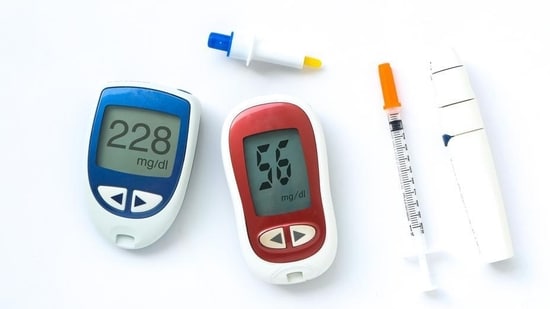Blood
Is pollution raising your blood sugar levels? Know how toxic air can lead to type 2 diabetes
Air pollution is directly and indirectly impacting our well-being every day. Here’s how pollutants are putting us at risk of type 2 diabetes.
Cases of diabetes have been on rise in India and across the globe. It’s not just the lifestyle and genetic factors at play, but also environmental factors that may be wreaking havoc with our health. According to a new study which is part of an ongoing research into chronic diseases in India, inhaled PM2.5 particles, 30 times thinner than a hair strand, can enter the bloodstream and cause several diseases. The study conducted on 12,000 residents of Delhi and Chennai was the first to find link between ambient PM2.5 and type 2 diabetes in India. Considering 3 of the 10 most polluted cities (Delhi, Kolkata and Mumbai) in the world are in India, urgent measures must be taken to safeguard our health from the dangerous mix of pollutants that even includes heavy metals. (Also read: Amid air pollution, tips to celebrate a safe Diwali and prevent respiratory issues)
“Air pollution can affect each and every organ in the body. When polluted air enters our body via lungs, it gets diffused into our blood through which it can reach all parts of our body. Noxious gases and small particulate matter like PM2.5 easily get mixed in blood and may cause ill effects. Though respiratory system remains the first and most common affected part, other systems can also get affected,” says Dr Sandeep Nayar, Principal Director & HOD, Pulmonology, BLK-Max Super Speciality Hospital.
Pollution and our body
Heart, eyes, throat, GI tract, brain all suffer the brunt of air pollution which can cause multiple health problems including cancer. Pollution is also being held responsible for many premature deaths which could otherwise be prevented. Now studies have also shown that pollution can lead to diabetes.
“One of the latest studies published from India where more than 12000 participants were studied from Chennai & Delhi, showed direct relation of diabetes and pollution. Similar studies previously from other countries have also shown direct relation but these were less polluted countries. Pollution can cause diabetes via multifactorial pathways both directly as well as indirectly,” says Dr Nayar.
How pollution increases risk of type 2 diabetes
Dr Nayar explains how pollution has been increasing our risk of diabetes:
Inflammation: Pollution can lead to rise in inflammatory markers as well as oxidative stress and it is a known fact that these factors lead to diabetes.
Affects insulin production: Pollution may cause destruction or exhaustion of Beta cells in pancreas causing reduction of insulin production leading to diabetes.
Insulin resistance: It has also been reported that even if there is enough insulin production, pollution can lead to insulin resistance which may decrease tissue sensitivity to the action of insulin.
Indirect effect: There may be indirect factors also which may result in diabetes. People are apprehensive of going out and exercise outside if the pollution is very high. This may result in lethargy and obesity. The sedentary lifestyle is one of the contributary factor for development of diabetes.
“We must try to reduce pollution by whatever way we can. Carpooling and travelling by public transport can reduce vehicular pollution, discouraging burning of mosquito coils or incense stick etc, may reduce indoor pollution. In addition, wearing a mask when going out and eating a healthy diet may help us to stand harmful effects of pollution. We must hydrate ourselves by consuming enough fluids and those with comorbidities must take full precautions by covering themselves and not to go outdoor unnecessarily. The patients should take their medicines regularly and consult their physicians in case they develop symptoms related to pollution,” says Dr Nayar.
 Subscribe today by clicking the link and stay updated with the latest news!” Click here!
Subscribe today by clicking the link and stay updated with the latest news!” Click here!
